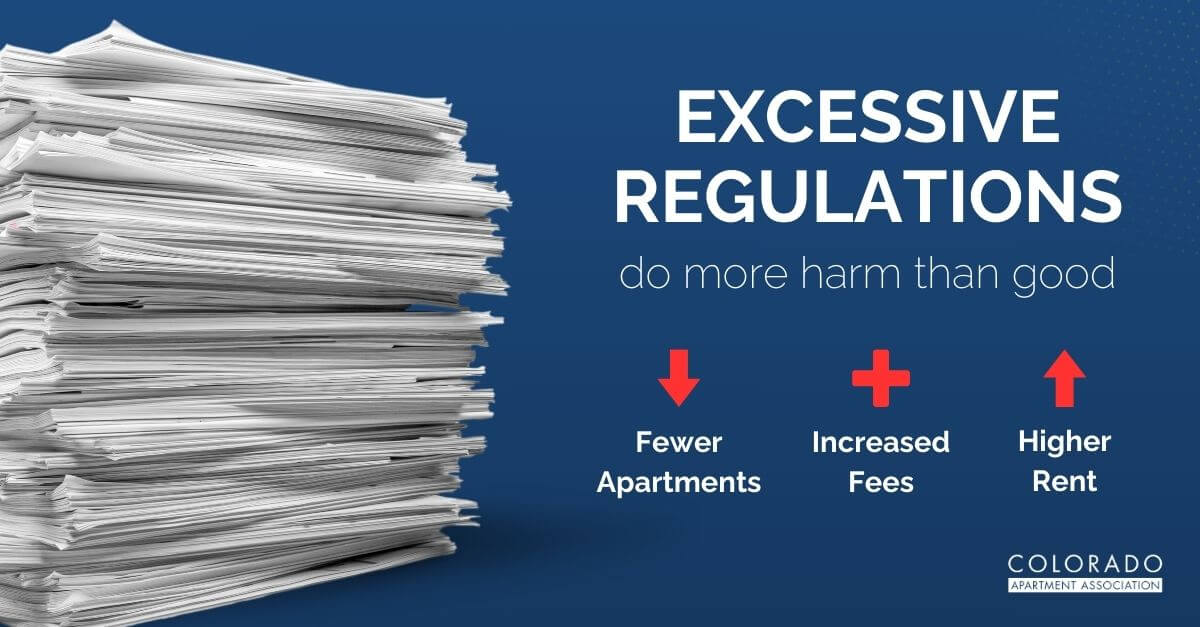How Excessive Regulations and Rent Control Drive Up Housing Costs in Colorado

Excessive regulations, including rent control, can do more harm than good and have unintended consequences
Home ownership in Colorado is all-too-often a distant dream for many, but even the option to rent is costing residents a pretty penny these days. It’s important to understand the reason rent costs are high.
Excessive regulations and overburdensome policies are a key influence. According to research conducted by the National Association of Home Builders (NAHB) and the National Multifamily Housing Council (NMHC) in 2022, regulations imposed by all levels of government account for an average of 40.6% of multifamily development costs. While some fees and regulations are necessary to ensure the safety and health of residents, properties, and the community, comparing these with those that cause unnecessary cost increases starts to paint a bleak picture of rental expenses—creating a potential nightmare for renters.
Rent control discourages maintenance and development of property
Examining some common rental housing regulations causing issues, rent control is at the top of the list. Rent control is a government-enforced limit on the amount property owners can charge for rental units in private, market-rate housing. Common terms for rent control include, “rent stabilization, rent freeze, rent caps, and anti-price gouging.” In theory, one would think these policies create stable and low housing costs. In practice, however, they do the opposite. Rent control policies have been researched extensively for years, and the results are consistent – these policies establish an artificial cap on rent prices which removes the need to continue investing in and maintaining quality properties while removing market competition, keeping rental costs down.
States with rent control like Washington D.C., California and New York, have the nation’s highest cost-of-living statistics and have rent control policies at the local level. The National Apartment Association recently studied rent control across the U.S. and found that rent control not only disincentivizes new development and investment but reduces property taxes and property value.
Burdensome regulations are absorbed by property owners and shifted to renters
Burdensome regulations that cost rental property owners time and money contribute to the costs of managing those properties. These costs are then passed on to the renter through increased prices and fees. Property owners, much like your neighborhood restaurant or coffee shop, attribute some to these costs as a part of doing business, but
due to some regulations, they are forced to shift some of these costs onto the renter. Reducing regulations is the most obvious and practical method to reduce costs and fees for property owners, which in turn reduces costs and fees for renters. Regulations are not the only factors impacting rental costs. In fact, the reduction in the housing supply and higher rental prices do more harm than good over time.
Land use and zoning laws influence property development
While existing properties are greatly impacted by these onerous policies, new and potential properties cause similar concerns for property developers. Communities in Colorado where construction of new apartments is restricted by zoning laws, weighty regulations, or even physical features and geography often result in some of the most expensive housing for renters and homeowners.
